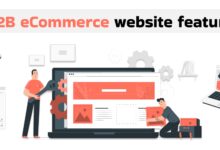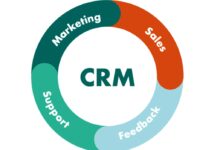B2B Meaning: 7 Powerful Insights You Must Know
Ever wondered what ‘B2B meaning’ really is? It’s more than just business jargon—it’s the backbone of global commerce. Let’s break it down in simple, powerful terms.
Understanding the Core B2B Meaning

The term B2B meaning refers to ‘Business-to-Business’—a model where companies sell products or services to other businesses, not individual consumers. This model powers supply chains, tech integrations, and enterprise solutions across industries.
What Does B2B Stand For?
B2B stands for ‘Business-to-Business.’ Unlike B2C (Business-to-Consumer), B2B transactions occur between two companies. For example, a software company selling CRM tools to another corporation operates under the B2B model.
- B2B involves long-term contracts and bulk orders.
- Decision-making is often multi-layered, involving procurement teams.
- Sales cycles are typically longer due to complexity and value.
Historical Evolution of B2B
The B2B model isn’t new. It dates back to the industrial revolution when manufacturers supplied raw materials to other factories. However, the digital era has transformed B2B meaning through e-commerce platforms, automation, and data analytics.
“B2B is not just about selling; it’s about building ecosystems.” — Forbes
According to Forbes Tech Council, digital transformation has accelerated B2B sales by over 40% in the last five years.
B2B Meaning in Modern Commerce
Today, the b2b meaning extends beyond traditional supply chains. It includes SaaS platforms, cloud services, consulting firms, and even digital marketplaces like Alibaba and ThomasNet.
Key Characteristics of B2B Transactions
B2B commerce is defined by several distinct features that differentiate it from B2C:
- Volume and Value: Orders are larger, often involving bulk purchases or long-term service agreements.
- Relationship-Driven: Success depends on trust, reliability, and consistent performance.
- Customization: Products or services are often tailored to meet specific business needs.
B2B vs. B2C: Clearing the Confusion
While both models involve selling, the b2b meaning differs fundamentally from B2C:
- Audience: B2B targets businesses; B2C targets individual consumers.
- Sales Cycle: B2B cycles are longer and involve multiple stakeholders.
- Marketing Approach: B2B relies on content marketing, SEO, and LinkedIn outreach; B2C uses emotional appeals and mass advertising.
For a deeper comparison, check out this resource from Investopedia.
Types of B2B Business Models
The b2b meaning encompasses various operational models, each serving different industry needs. Understanding these helps businesses choose the right strategy.
Manufacturer to Business (M2B)
This is the classic B2B model where manufacturers produce goods sold to other companies. For example, a steel manufacturer supplying materials to an automotive company.
- Focus on quality control and scalability.
- Requires strong logistics and inventory management.
- Often involves long-term supply contracts.
Business to Government (B2G)
A subset of B2B, B2G involves companies selling products or services to government agencies. Think of IT firms providing cybersecurity solutions to public institutions.
- Bidding processes are formal and competitive.
- Regulatory compliance is critical.
- Payment terms may be longer but contracts are stable.
Service-Based B2B
This model includes consulting, marketing agencies, legal services, and IT support. The b2b meaning here is about expertise transfer rather than physical goods.
- Revenue is often project-based or retainer-driven.
- Success depends on client outcomes and KPIs.
- Client acquisition relies heavily on case studies and referrals.
The Role of Technology in B2B Meaning
Technology has redefined the b2b meaning landscape. From AI-driven sales tools to automated procurement systems, digital innovation is reshaping how businesses interact.
E-Commerce Platforms for B2B
Platforms like Alibaba and Amazon Business have made B2B transactions faster and more transparent. These platforms offer:
- Real-time pricing and inventory tracking.
- Secure payment gateways.
- Supplier ratings and reviews.
They’ve effectively democratized access to global suppliers, especially for SMEs.
CRM and Automation Tools
Customer Relationship Management (CRM) systems like Salesforce and HubSpot are essential in modern B2B operations. They help manage leads, track interactions, and forecast sales.
- Automate follow-ups and nurture campaigns.
- Integrate with email, social media, and analytics tools.
- Enable personalized communication at scale.
“Automation isn’t replacing humans; it’s empowering them to focus on strategy.” — Harvard Business Review
Data Analytics in B2B Decision Making
Data is the new currency in B2B. Companies use analytics to understand customer behavior, optimize pricing, and predict market trends.
- Predictive analytics reduce churn and improve retention.
- Real-time dashboards provide actionable insights.
- AI-powered tools identify upsell opportunities.
According to McKinsey, firms using advanced analytics grow revenue 8-10% faster than peers.
B2B Marketing Strategies That Work
Understanding the b2b meaning isn’t enough—you need effective marketing to succeed. Unlike B2C, B2B marketing is rational, data-driven, and relationship-focused.
Content Marketing for B2B
High-quality content establishes authority and nurtures leads. Whitepapers, case studies, and webinars are highly effective.
- Address pain points with actionable insights.
- Use SEO to attract organic traffic.
- Repurpose content across channels (LinkedIn, email, blogs).
Account-Based Marketing (ABM)
ABM treats individual accounts as markets of one. It’s a hyper-targeted approach ideal for high-value clients.
- Personalized outreach based on company needs.
- Aligns sales and marketing teams.
- Delivers higher ROI than traditional campaigns.
Learn more about ABM from ABM Leadership Board.
Social Selling and LinkedIn Strategy
LinkedIn is the #1 platform for B2B sales. Professionals use it to build credibility, share insights, and connect with decision-makers.
- Engage with posts from target accounts.
- Publish thought leadership articles.
- Use InMail for direct outreach.
Challenges in the B2B Landscape
Despite its advantages, the b2b meaning comes with unique challenges that can impact growth and scalability.
Long Sales Cycles
B2B sales often take months due to complex decision-making hierarchies. A single deal might require approvals from finance, IT, and operations teams.
- Solution: Use CRM to track touchpoints and nurture leads.
- Provide clear ROI calculators and demos.
- Offer pilot programs to reduce perceived risk.
Customer Retention and Churn
Acquiring a B2B client is expensive, so retention is crucial. Poor onboarding or lack of support can lead to churn.
- Implement customer success teams.
- Conduct regular check-ins and satisfaction surveys.
- Offer training and resources for product adoption.
Competition and Market Saturation
Many B2B sectors are crowded. Standing out requires differentiation through innovation, service, or pricing.
- Focus on niche markets or vertical specialization.
- Invest in R&D for unique features.
- Build brand authority through content and events.
Future Trends Shaping B2B Meaning
The b2b meaning is evolving rapidly. Emerging trends are redefining how companies operate, sell, and grow.
AI and Machine Learning Integration
AI is transforming B2B operations—from chatbots handling customer queries to predictive analytics forecasting demand.
- AI-powered sales assistants prioritize leads.
- Chatbots reduce response time in customer support.
- Machine learning optimizes pricing and inventory.
Sustainability and Ethical Sourcing
More B2B buyers prioritize sustainability. Companies are expected to disclose their environmental impact and labor practices.
- Use eco-friendly packaging and materials.
- Partner with certified green suppliers.
- Report ESG (Environmental, Social, Governance) metrics.
Hybrid Commerce Models
The line between B2B and B2C is blurring. Some companies now serve both markets simultaneously—like Shopify, which offers tools for businesses and direct-to-consumer brands.
- Flexible platforms support dual models.
- Marketing messages are segmented by audience.
- Pricing structures differ based on volume and service level.
Real-World Examples of B2B Success
Understanding the b2b meaning is easier with real-world examples. Let’s look at companies that have mastered the B2B model.
Salesforce: Revolutionizing CRM
Salesforce is a prime example of B2B SaaS success. It provides cloud-based CRM solutions used by enterprises worldwide.
- Focus on integration and scalability.
- Invests heavily in customer education (Trailhead).
- Uses a subscription-based revenue model.
Intel: Powering Global Tech
Intel sells microprocessors to computer manufacturers like Dell and HP. This is classic M2B B2B.
- Invests billions in R&D annually.
- Maintains long-term partnerships with OEMs.
- Uses trade shows (like CES) for B2B marketing.
ServiceNow: Automating Enterprise Workflows
ServiceNow offers digital workflow solutions for IT, HR, and customer service departments.
- Solves complex operational inefficiencies.
- High customer retention due to platform stickiness.
- Expands through strategic acquisitions.
What is the basic definition of B2B meaning?
The b2b meaning refers to business transactions between two companies, where one company provides products or services to another. It’s commonly used in supply chains, SaaS, and enterprise solutions.
How does B2B differ from B2C?
B2B involves longer sales cycles, multiple decision-makers, and rational purchasing based on ROI. B2C is faster, emotionally driven, and targets individual consumers.
What are common B2B business models?
Common models include Manufacturer to Business (M2B), Business to Government (B2G), and Service-Based B2B (e.g., consulting, IT services).
Why is content marketing important in B2B?
Content marketing builds trust, educates prospects, and supports lead nurturing. Whitepapers, case studies, and webinars are especially effective in B2B.
What role does technology play in modern B2B?
Technology enables automation, data analytics, e-commerce platforms, and AI-driven sales tools, making B2B operations more efficient and scalable.
Understanding the b2b meaning is essential for anyone involved in modern business. From its historical roots to digital transformation, B2B is a dynamic, relationship-driven model that powers global economies. Whether you’re a startup or an enterprise, mastering B2B strategies—like content marketing, CRM use, and customer retention—can drive sustainable growth. As technology evolves and sustainability becomes a priority, the future of B2B will be shaped by innovation, ethics, and adaptability. By studying real-world leaders like Salesforce and Intel, businesses can learn how to thrive in this complex yet rewarding landscape.
Further Reading:





